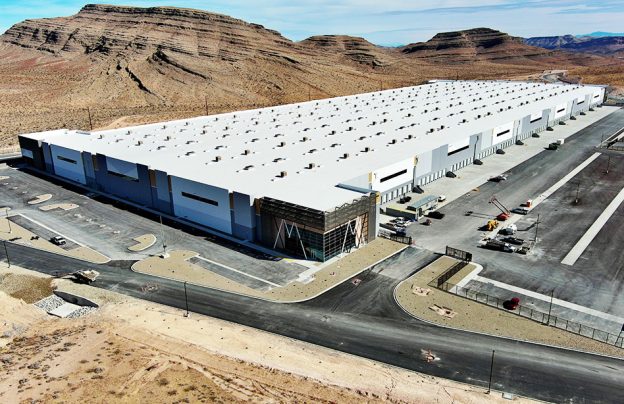The Las Vegas development community is stepping into 2025 with both caution and optimism. Amid rising costs, supply constraints, and labor challenges, there’s an unmistakable buzz of opportunity that’s fueling a renewed confidence among industry leaders. Recently, NAIOP Southern Nevada hosted a breakfast program where top commercial real estate executives offered their outlook for the coming year. Here’s a closer look at what was shared—and what it means for the future of development in Las Vegas.
Reflecting on 2024: A Year of Transformation
During the event, moderators and panelists alike acknowledged that 2024 was marked by distinctive market dynamics. Megan McInerney, Associate Vice President at Colliers’ Office Division, noted that the previous year brought a mix of hurdles, including labor shortages, soaring material costs, and fluctuating tenant demand. Yet, despite these headwinds, certain sectors ranked as standout performers. Industrial demand remained robust even as the market saw an influx of new inventory, while Class A office spaces recorded leases at premium rates. Retail activity, too, sustained its momentum, reflecting a broader resilience across the sector.
This multisector performance set the stage for cautious optimism and laid a strong foundation for the debates on what 2025 might hold.
Sector Insights: From Industrial to Office and Beyond
Industrial Development: A Pipeline of Confidence
Jeff LaPour described 2024 as a transitional period for his company with notable land sell-offs amid post-pandemic market heat. With two major industrial deals completed in Las Vegas last year, LaPour sees the industrial sector stabilizing in 2025. He stressed that the market is, in many ways, a “game of confidence”—one where the vast pipelines of industrial space coupled with broker incentives suggest that a period of stabilization is on the horizon. With rents expected to ease slightly and concessions on the rise, the industrial landscape appears poised for orderly absorption rather than a mad dash for new starts.
The Office Market: On Hold for Now
When it comes to office space, market dynamics look markedly different. LaPour pointed out that tenant demand exists, but the model is complicated by the massive scale of the developments and the intricacies of long-term leasing. In his view, without transformative projects—like those championed by major players in established locations—the office segment might remain on ice for the foreseeable future.
Multi-Family and Affordable Housing: Building with Purpose
A significant part of the morning’s discussion centered on the evolving multi-family landscape. Jess Molasky of Ovation Development shared that his firm successfully delivered 1,000 market-rate apartments in 2024, with rapid absorption rates signaling robust demand. However, market pricing challenges have prompted a strategic pivot: a shift in focus toward affordable housing. Molasky explained, “We’re able to build a product that was above what we were charging before but affordable to the workers in Las Vegas.” With this pivot, Ovation broke ground on 1,000 affordable apartment units and plans to continue this trend into 2025—even as the debate on market-rate housing lingers. There’s a broader conversation here too: if the balance of workforce housing can’t match demand, it might be indicative of deeper, systemic challenges not just locally, but nationwide.
Retail Resilience and Mixed-Use Visions
Stan Wasserkrug from InterCapital Asset Management delivered encouraging news from the retail front. According to Wasserkrug, retail projects in Las Vegas thrived throughout COVID and remain robust today. With seven ongoing projects in Las Vegas and additional efforts in nearby Phoenix, his team’s portfolio boasts success stories like a five-acre development featuring flagship tenants such as McDonald’s, AutoZone, 7-Eleven, and Taco Bell. Watered down by modest material cost increases and buoyed by a supportive local government—particularly in North Las Vegas—his narrative remains one of calculated optimism. Projects like an 11-acre mixed-use space near Tropical and Pecos, which combines retail, healthcare with Compass Health, and mini storage, illustrate the creative approaches developers are adopting to maximize land use and community impact.
Looking Forward: Stabilization and Strategic Shifts
Megan McInerney observed that despite 2024’s hurdles—high land prices, construction constraints, and a challenging capital environment—the market sentiment appears to be growing increasingly bullish. As developers weigh the pros and cons of launching new projects, it’s clear that confidence plays a critical role. LaPour summed it up nicely, describing the outlook for 2025 as one of cautious relief and stabilization. While he predicts modest adjustments in industrial rents and concessions, he also hinted that the kinds of dramatic shifts seen in previous years might finally ease.
Molasky, meanwhile, reminded everyone that Las Vegas has long been viewed as a land of opportunity—where favorable tax climates and the promise of community impact compel investment. Yet, he also cautioned that rising tariffs and potential labor shortages could pose significant challenges. With plans already in place for affordable housing in 2025 and market-rate projects queued for 2026, the city’s multi-family future remains both exciting and complex.
Final Thoughts
As we stand on the brink of 2025, the Las Vegas development landscape is a study in contrasts. The resilience of industrial and retail sectors offers a counterbalance to the uncertainties facing the office and multi-family markets. For developers, investors, and community stakeholders alike, the overarching message is one of cautious optimism—an acknowledgment that while challenges persist, innovation and adaptive strategies will pave the way for continued growth and transformation.
Whether you’re watching the warehouse and industrial space trends or keeping an eye on multi-family housing shifts, staying informed is crucial in this dynamic market. Here at VegasWarehouseSpaces.com, we remain dedicated to providing you with up-to-date insights and deep dives into the trends shaping our city’s future.







